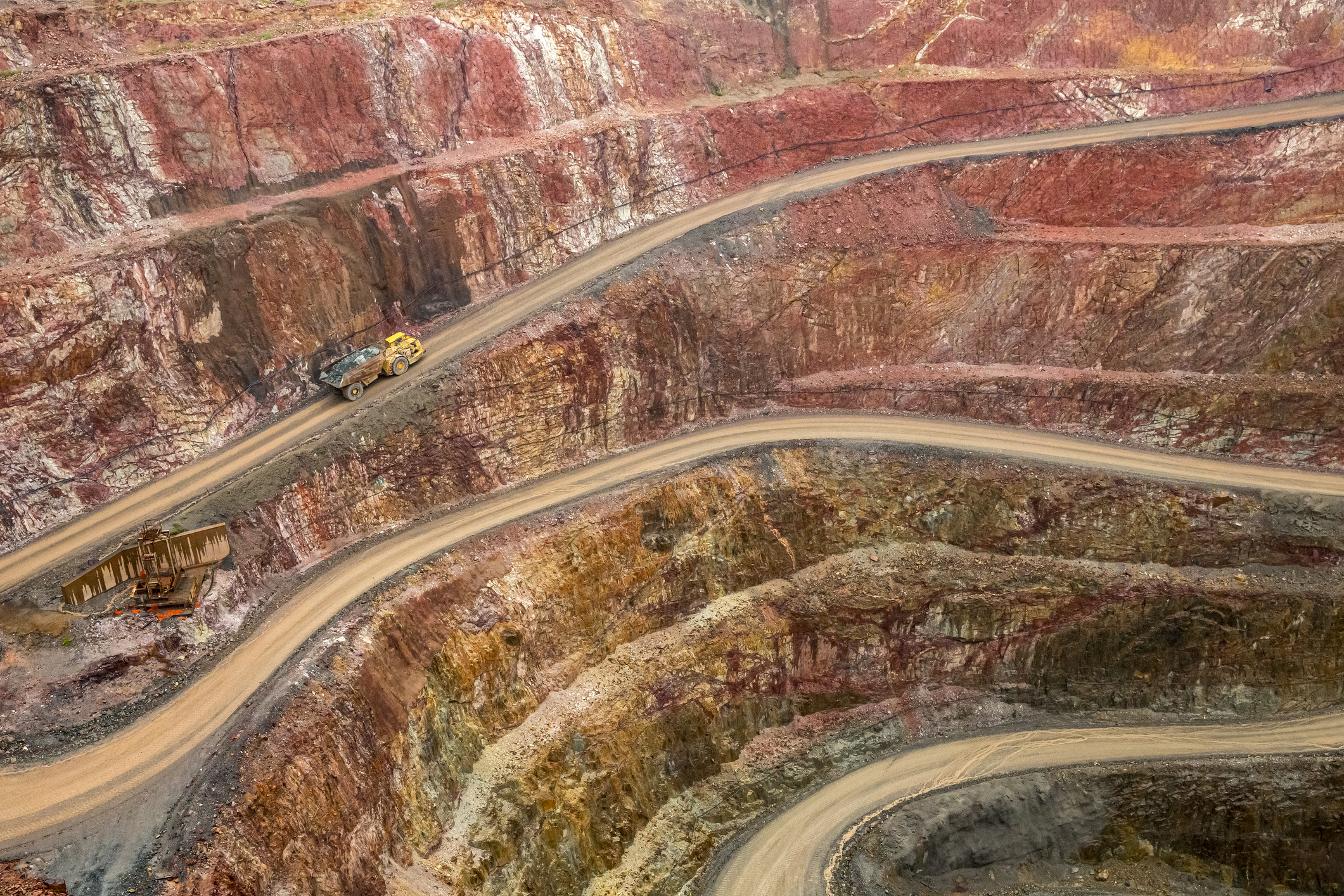This category can be used to account for known deposits of oil, natural gas, coal, peat, non-metallic and metallic mineral resources.
Please choose a Metric:
Quantity of environmental asset - Coal and peat
Please choose a Metric:
Quality of environmental asset - Coal and peat
Please choose a Metric:
Coal and peat extracted
Please choose a Metric:
Coal and peat extracted - monetary value
Units
Example methods / guidance / references
What are tiers?
Tier 1
Estimate using own judgement and observations
Tier 2
Estimate using third-party professional estimates or public data
Tier 3
Model or measure based on site-specific surveys/sampling, remote or in-field sensing, laboratory analysis, etc.
Example data sources
Internal records
Third-party data sources
Data on annual production of black coal and brown coal resources in Australia by basin are available in the latest version of Australia’s Energy Commodity Resources.
Site-specific measurements or model outputs
Notes
Work in progress - Feedback welcome
Last updated: 15th October 2024
Units
Example methods / guidance / references
What are tiers?
Tier 1
Multiply physical flow quantity by estimated monetary value per unit
Tier 2
Multiply physical flow quantity by estimated monetary value per unit
Tier 3
Multiply physical flow quantity by estimated monetary value per unit
Example data sources
Internal records
Third-party data sources
Site-specific measurements or model outputs
Notes
Work in progress - Feedback welcome
Last updated: 15th October 2024
Units
Example methods / guidance / references
What are tiers?
Tier 1
Estimate using own judgement and observations
Tier 2
Estimate using third-party professional estimates or public data
Tier 3
Model or measure based on site-specific surveys/sampling, remote or in-field sensing, laboratory analysis, etc.
Example data sources
Internal records
Third-party data sources
Data on annual production of oil resources in Australia by basin are available in the latest version of Australia’s Energy Commodity Resources.
Site-specific measurements or model outputs
Notes
Work in progress - Feedback welcome
Last updated: 15th October 2024
Units
Example methods / guidance / references
What are tiers?
Tier 1
Multiply physical flow quantity by estimated monetary value per unit
Tier 2
Multiply physical flow quantity by estimated monetary value per unit
Tier 3
Multiply physical flow quantity by estimated monetary value per unit
Example data sources
Internal records
Third-party data sources
Site-specific measurements or model outputs
Notes
Work in progress - Feedback welcome
Last updated: 15th October 2024
Units
Example methods / guidance / references
What are tiers?
Tier 1
Estimate using own judgement and observations
Tier 2
Estimate using third-party professional estimates or public data
Tier 3
Model or measure based on site-specific surveys/sampling, remote or in-field sensing, laboratory analysis, etc.
Example data sources
Internal records
Third-party data sources
Data on annual production of identified mineral resources in Australia, by mineral, are available in the latest version of Australia’s Identified Mineral Resources.
Site-specific measurements or model outputs
Notes
Work in progress - Feedback welcome
Last updated: 15th October 2024
Units
Example methods / guidance / references
What are tiers?
Tier 1
Estimate using own judgement and observations
Tier 2
Estimate using third-party professional estimates or public data
Tier 3
Model or measure based on site-specific surveys/sampling, remote or in-field sensing, laboratory analysis, etc.
Example data sources
Internal records
Third-party data sources
Site-specific measurements or model outputs
Notes
Work in progress - Feedback welcome
Last updated: 3rd January 2025
Units
Example methods / guidance / references
What are tiers?
Tier 1
Estimate using own judgement and observations
Tier 2
Estimate using third-party professional estimates or public data
Tier 3
Model or measure based on site-specific surveys/sampling, remote or in-field sensing, laboratory analysis, etc.
Example data sources
Internal records
Third-party data sources
Data on annual production of natural gas resources in Australia by basin are available in the latest version of Australia’s Energy Commodity Resources.
Site-specific measurements or model outputs
Notes
Work in progress - Feedback welcome
Last updated: 15th October 2024
Units
Example methods / guidance / references
What are tiers?
Tier 1
Multiply physical flow quantity by estimated monetary value per unit
Tier 2
Multiply physical flow quantity by estimated monetary value per unit
Tier 3
Multiply physical flow quantity by estimated monetary value per unit
Example data sources
Internal records
Third-party data sources
Site-specific measurements or model outputs
Notes
Work in progress - Feedback welcome
Last updated: 15th October 2024
Units
Example methods / guidance / references
What are tiers?
Tier 1
Estimate using own judgement and observations
Tier 2
Estimate using third-party professional estimates or public data
Tier 3
Model or measure based on site-specific surveys/sampling, remote or in-field sensing, laboratory analysis, etc.
Example data sources
Internal records
Third-party data sources
Data on annual production of identified mineral resources in Australia, by mineral, are available in the latest version of Australia’s Identified Mineral Resources.
Site-specific measurements or model outputs
Notes
Work in progress - Feedback welcome
Last updated: 15th October 2024
Units
Example methods / guidance / references
What are tiers?
Tier 1
Multiply physical flow quantity by estimated monetary value per unit
Tier 2
Multiply physical flow quantity by estimated monetary value per unit
Tier 3
Multiply physical flow quantity by estimated monetary value per unit
Example data sources
Internal records
Third-party data sources
Site-specific measurements or model outputs
Notes
Work in progress - Feedback welcome
Last updated: 15th October 2024
Units
Example methods / guidance / references
What are tiers?
Tier 1
Estimate using own judgement and observations
Tier 2
Estimate using third-party professional estimates or public data
Tier 3
Model or measure based on site-specific surveys/sampling, remote or in-field sensing, laboratory analysis, etc.
Example data sources
Internal records
Third-party data sources
Site-specific measurements or model outputs
Notes
Work in progress - Feedback welcome
Last updated: 15th October 2024
Units
Example methods / guidance / references
What are tiers?
Tier 1
Estimate using own judgement and observations
Tier 2
Estimate using third-party professional estimates or public data
Tier 3
Model or measure based on site-specific surveys/sampling, remote or in-field sensing, laboratory analysis, etc.
Example data sources
Internal records
Third-party data sources
Site-specific measurements or model outputs
Notes
Work in progress - Feedback welcome
Last updated: 15th October 2024
Units
Example methods / guidance / references
What are tiers?
Tier 1
Estimate using own judgement and observations
Tier 2
Estimate using third-party professional estimates or public data
Tier 3
Model or measure based on site-specific surveys/sampling, remote or in-field sensing, laboratory analysis, etc.
Example data sources
Internal records
Third-party data sources
Site-specific measurements or model outputs
Notes
Work in progress - Feedback welcome
Last updated: 31st October 2024
Units
Example methods / guidance / references
What are tiers?
Tier 1
Estimate using own judgement and observations
Tier 2
Estimate using third-party professional estimates or public data
Tier 3
Model or measure based on site-specific surveys/sampling, remote or in-field sensing, laboratory analysis, etc.
Example data sources
Internal records
Third-party data sources
Site-specific measurements or model outputs
Notes
Work in progress - Feedback welcome
Last updated: 31st October 2024
Units
Example methods / guidance / references
What are tiers?
Tier 1
Estimate using own judgement and observations
Tier 2
Estimate using third-party professional estimates or public data
Tier 3
Model or measure based on site-specific surveys/sampling, remote or in-field sensing, laboratory analysis, etc.
Example data sources
Internal records
Third-party data sources
Site-specific measurements or model outputs
Notes
Work in progress - Feedback welcome
Last updated: 15th October 2024
Units
Example methods / guidance / references
What are tiers?
Tier 1
Estimate using own judgement and observations
Tier 2
Estimate using third-party professional estimates or public data
Tier 3
Model or measure based on site-specific surveys/sampling, remote or in-field sensing, laboratory analysis, etc.
Example data sources
Internal records
Third-party data sources
Maps showing the locations of black coal resources and brown coal resources across Australia are available at the Geoscience Australia Portal (select layers: Black Coal Resources; Brown Coal Resources). Data on quantities of black coal and brown coal resources in Australia by basin are available in the latest version of Australia’s Energy Commodity Resources.
Site-specific measurements or model outputs
Notes
Work in progress - Feedback welcome
Last updated: 15th October 2024
Units
Example methods / guidance / references
What are tiers?
Tier 1
Estimate using own judgement and observations
Tier 2
Estimate using third-party professional estimates or public data
Tier 3
Model or measure based on site-specific surveys/sampling, remote or in-field sensing, laboratory analysis, etc.
Example data sources
Internal records
Third-party data sources
Maps showing the locations of mineral resources across Australia are available at the Geoscience Australia Portal (select layer: Mineral Resources and Reserves – Geoscience Australia). Data on quantities of identified mineral resources in Australia, by mineral, are available in the latest version of Australia’s Identified Mineral Resources.
Site-specific measurements or model outputs
Notes
Work in progress - Feedback welcome
Last updated: 15th October 2024
Units
Example methods / guidance / references
What are tiers?
Tier 1
Estimate using own judgement and observations
Tier 2
Estimate using third-party professional estimates or public data
Tier 3
Model or measure based on site-specific surveys/sampling, remote or in-field sensing, laboratory analysis, etc.
Example data sources
Internal records
Third-party data sources
Maps showing the locations of gas fields in Western Australia and Victoria are available at the National Map (select layers: Oil and Gas Fields [for Victoria]); Oil and Gas Fields (DMIRS-089) [for Western Australia]). Data on quantities of natural gas resources in Australia by basin are available in the latest version of Australia’s Energy Commodity Resources.
Site-specific measurements or model outputs
Notes
Work in progress - Feedback welcome
Last updated: 15th October 2024
Units
Example methods / guidance / references
What are tiers?
Tier 1
Estimate using own judgement and observations
Tier 2
Estimate using third-party professional estimates or public data
Tier 3
Model or measure based on site-specific surveys/sampling, remote or in-field sensing, laboratory analysis, etc.
Example data sources
Internal records
Third-party data sources
Maps showing the locations of mineral resources across Australia are available at the Geoscience Australia Portal (select layer: Mineral Resources and Reserves – Geoscience Australia). Data on quantities of identified mineral resources in Australia, by mineral, are available in the latest version of Australia’s Identified Mineral Resources.
Site-specific measurements or model outputs
Notes
Work in progress - Feedback welcome
Last updated: 15th October 2024
Units
Example methods / guidance / references
What are tiers?
Tier 1
Estimate using own judgement and observations
Tier 2
Estimate using third-party professional estimates or public data
Tier 3
Model or measure based on site-specific surveys/sampling, remote or in-field sensing, laboratory analysis, etc.
Example data sources
Internal records
Third-party data sources
Maps showing the locations of oil fields in Western Australia and Victoria are available at the National Map – Oil and Gas Fields (for Victoria); National Map – Oil and Gas Fields (DMIRS-089) (for Western Australia). Data on quantities of oil resources in Australia by basin are available in the latest version of Australia’s Energy Commodity Resources.
Site-specific measurements or model outputs
Notes
Work in progress - Feedback welcome
Last updated: 9th October 2024

